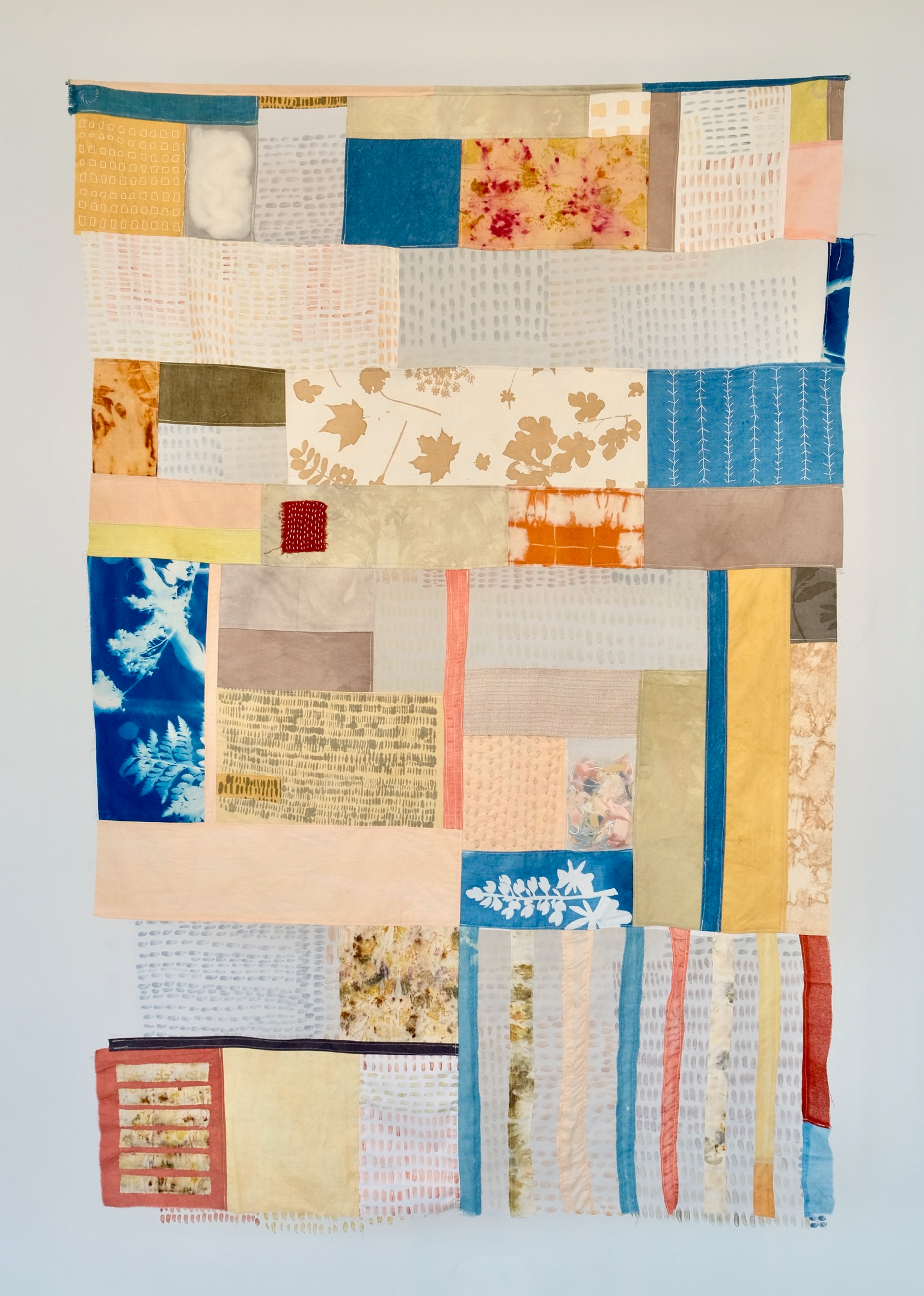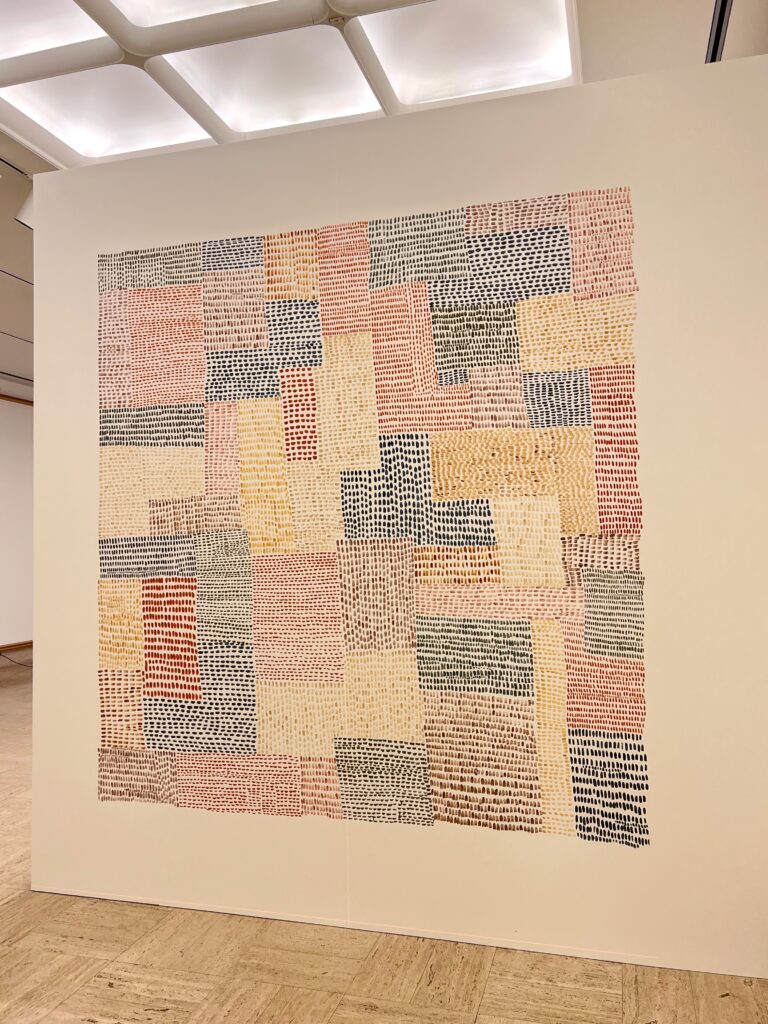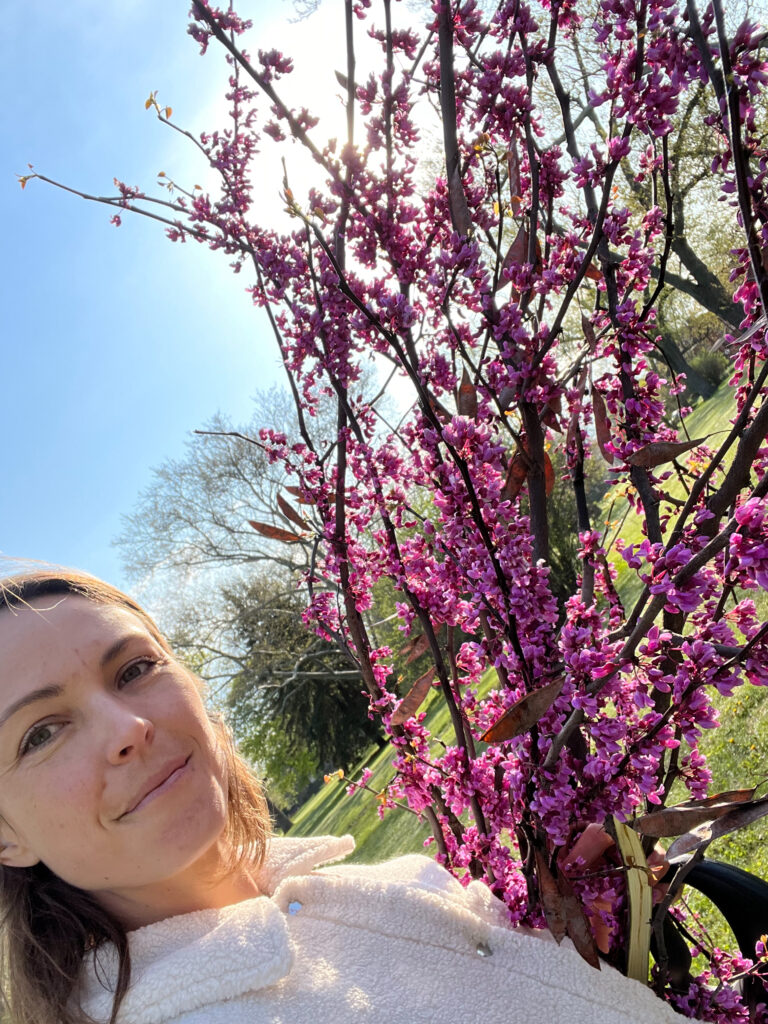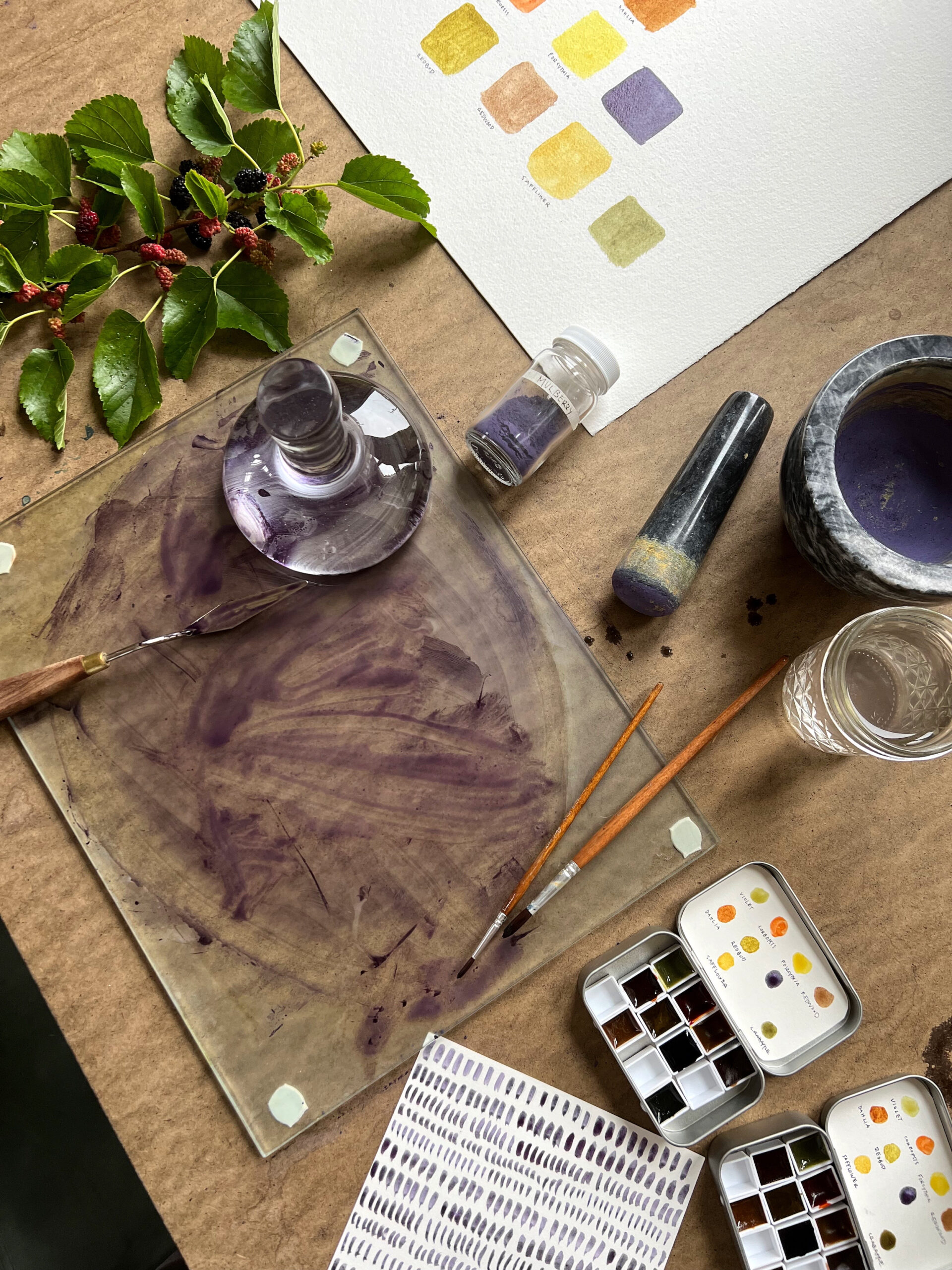“For me, natural dyeing has always been about place and local color,” says artist Kayla Powers, whose multidisciplinary works stitch together her passions for gardening, foraging, textiles, and exploring her local environment. A connection to the land and its natural bounty lays the framework for her quilt-like compositions, inspired by stained glass, textile traditions, and dyes derived from regional plants.
Based in Detroit, Michigan, where she has lived for the past seven years and recently graduated from Cranbrook Academy of Art, Powers has honed her interest in plants and botanical materials that she finds near her home and gardens on a small plot in her backyard. “I have been gardening and foraging in Detroit for the past seven years, so I feel familiar with the plant life in this city, and I continue to learn about it constantly,” she says.
KAYLA POWERS“Detroit is so unique for a city, in that there is a lot of open land. And sometimes you hear it called ‘vacant land,’ but I have found it to be the exact opposite. There is such a variety of plant and animal life that thrives in these open spaces.”

When she moved to the city in 2017, she was surprised to find on her regular walks through the neighborhood that natural dye plants grow abundantly in many of the uninhabited lots. “Foraging for plants in the city is a great way to get to know a place,” Powers says. “Detroit is so unique for a city, in that there is a lot of open land. And sometimes you hear it called ‘vacant land,’ but I have found it to be the exact opposite. There is such a variety of plant and animal life that thrives in these open spaces.”
Powers’ knowledge of plants developed throughout her travels and work experience in places like a permaculture farm in Colombia, a biodynamic farm in Upstate New York, and a ginger farm in Hawaii. During a six-month Textile Internship at WildCraft Studio School in Portland, Oregon, she was introduced to natural dyes, which were used to color wool processed from locally-raised sheep.

Immersing in material, place, and time
In her most recent creative explorations, Powers has begun working with sheer or transparent fabrics, sometimes filled with seeds or embellished with the silhouettes of leaves and flowers. “I was looking at quilts and stained glass windows and thinking about light and how that impacts our experience of a place,” she says. She has begun incorporating cyanotypes, a camera-less photographic process that relies on the sun and a solution of iron salts to imprint an image onto a surface.
Powers enjoys weaving together notions of medium, place, and passing time. “I was writing out my materials lists and thinking, okay, I used cotton fabric that I dyed with marigolds—for example—and I grew the marigolds with soil, water, and sunlight, and it felt like this poetic moment to me, that the quality and quantity of light in a place determines the color in a certain plant.”
A new technique in Powers’ repertoire includes mixing pigment with milk-based paint to create patterns she calls “seed stitches.” She says, “I love the parallels between gardening and quilting—sowing seeds and sewing fabric—so these little marks I’m making directly on the wall are kind of an homage to both.” This summer, she also rented a space at a local ceramics studio and began experimenting with clay. “I love to let the process guide me,” she says. “That way, I can stay open to the possibilities.”






